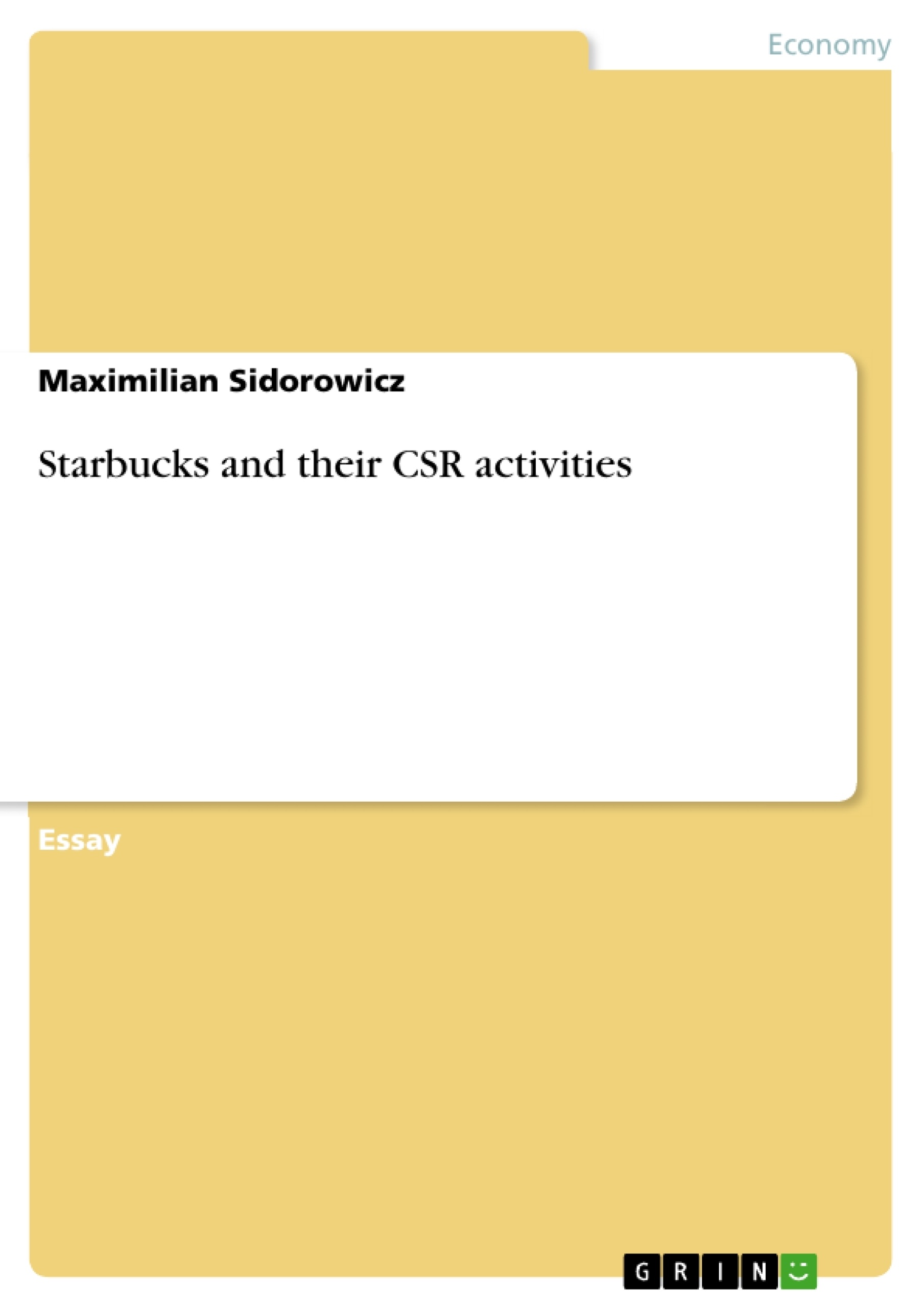This assignment will describe in its main-part what main activities regarding acting (social) responsible are being implemented by Starbucks, emphasizing firstly on the second-biggest city in Indonesia, Surabaya. It will also depict some controversies around Starbucks. Beforehand, the paper will briefly explain the beginning of CSR and where it does stand now, as well as give a short history of Starbucks. At the end, the findings will be summarized, and a forecast will be made.
Corporate social responsibility (CSR) has become a topic of great interest for companies all around the world. 93 % of the 250 biggest companies worldwide are stating a CSR report and since the EU-directive 2014/95/EU is implemented in national law, became easier to hold the companies responsible for their activities. Starbucks has been an early adapter of the strategy to concentrate on economic, social and environmental issues and combining them to an overall corporate strategy and is now the second most valuable fast food company on the globe.
Table of Contents
- Introduction
- Starbucks and their CSR activities
- Corporate Social Responsibility
- Starbucks
- Starbucks and CSR
- Controversies around Starbucks
- Conclusion
- References
Objectives and Key Themes
This paper aims to provide a comprehensive overview of Starbucks' corporate social responsibility (CSR) activities, specifically focusing on their initiatives in Surabaya, Indonesia. The paper will delve into the evolution of CSR, provide a brief history of Starbucks, and analyze the company's CSR strategies, encompassing economic, social, and environmental aspects. The paper will also explore controversies surrounding Starbucks' CSR practices.
- The historical development and current state of corporate social responsibility (CSR)
- Starbucks' CSR activities in various areas, including social and environmental initiatives
- Starbucks' approach to ethical sourcing and partnerships with communities
- Controversies and challenges associated with Starbucks' CSR practices
- The company's efforts to achieve a positive impact on its stakeholders, including employees, customers, and the environment
Chapter Summaries
- Introduction: This chapter introduces the concept of corporate social responsibility (CSR) and its growing significance in the business world. It highlights the increasing emphasis on companies being accountable for their social and environmental impact. The chapter also provides a brief overview of Starbucks' history and its evolution as a global coffee giant.
- Starbucks and their CSR activities: This chapter explores Starbucks' CSR activities in detail, covering various areas such as environmental sustainability, social responsibility, and ethical sourcing practices. It examines the company's initiatives in Surabaya, Indonesia, showcasing specific programs and partnerships.
- Corporate Social Responsibility: This chapter delves into the origins and evolution of CSR, discussing key definitions and frameworks. It examines how CSR has transitioned from a concept focused on philanthropy to a more strategic approach integrated into core business practices.
- Starbucks: This chapter provides a historical overview of Starbucks, tracing its growth from a small coffee retailer to a global coffeehouse chain. It examines key milestones and the company's evolving business strategies.
- Starbucks and CSR: This chapter analyzes Starbucks' specific CSR initiatives, including their efforts to promote environmental sustainability, community engagement, and ethical sourcing practices. It explores the company's partnerships with NGOs and local communities.
- Controversies around Starbucks: This chapter examines controversies surrounding Starbucks' CSR practices, exploring criticisms related to labor conditions, ethical sourcing, and environmental impact. It discusses how the company has addressed these concerns.
Keywords
The main keywords and focus topics of this text include: corporate social responsibility (CSR), Starbucks, sustainability, ethical sourcing, community engagement, environmental impact, social responsibility, controversies, Surabaya, Indonesia, coffee, supply chain, NGOs, partnerships, triple bottom line, greenwashing.
- Quote paper
- Maximilian Sidorowicz (Author), 2021, Starbucks and their CSR activities, Munich, GRIN Verlag, https://www.grin.com/document/1322216



